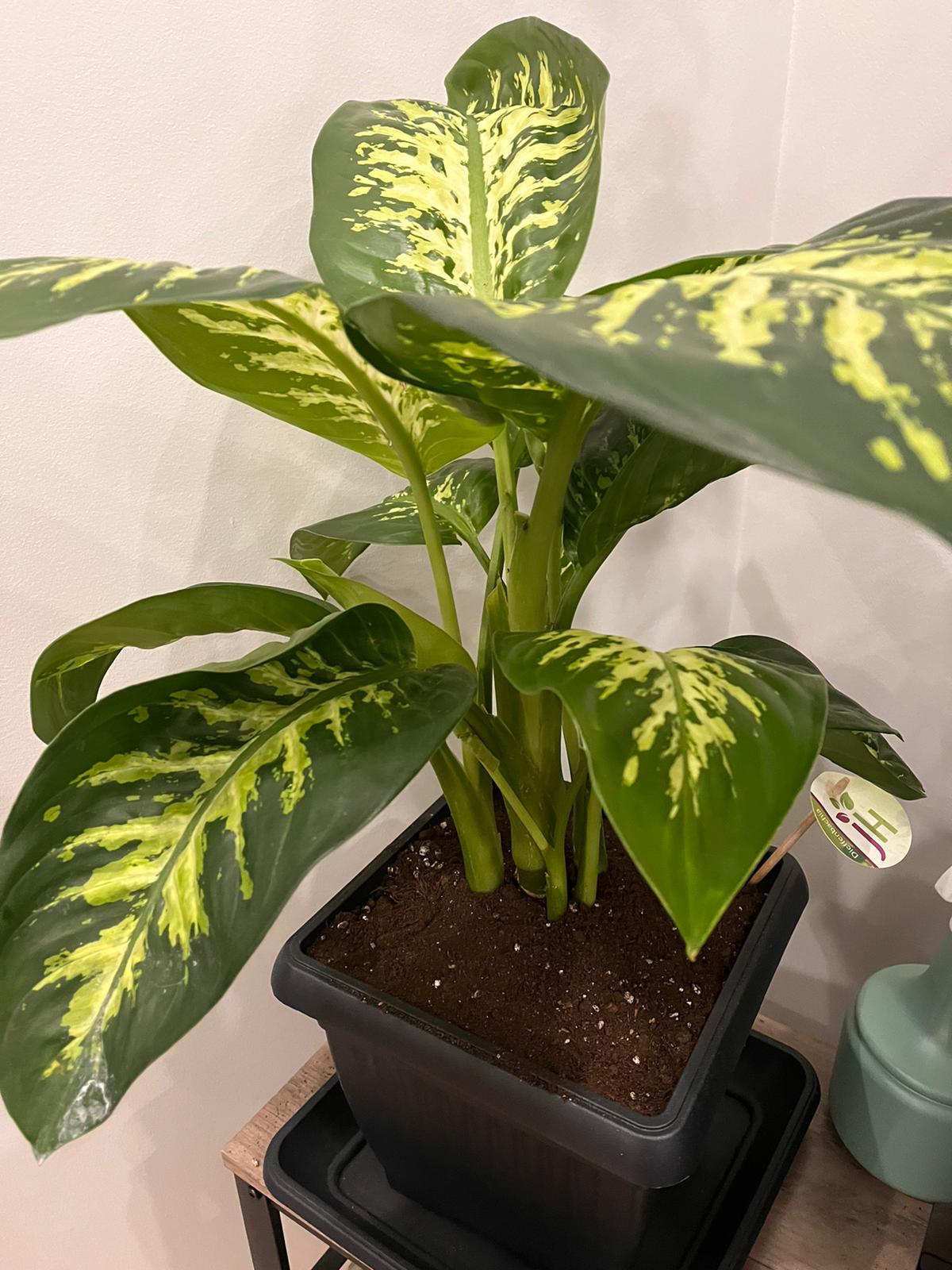General description
Dieffenbachia, commonly known as Dumb Cane, is a member of the Araceae family and is native to tropical regions of Central and South America. It is characterized by its large, broad leaves that are typically green with eye-catching patterns of cream, white, or yellow. The variegated foliage varies from one cultivar to another, making Dieffenbachia a visually appealing and decorative indoor plant. The leaves grow in an alternate arrangement along the stems and can be ovate or lance-shaped.
Basic care
| Sunlight requirements | Watering schedule | Coffee grounds |
| Partial sunlight | 14 days | Avoid |
Tips
- Light: Dieffenbachia prefers bright, indirect light. It can tolerate lower light conditions but may not grow as vigorously or produce as vibrant foliage. Avoid exposing it to direct sunlight, as this can scorch the leaves.
- Watering: Keep the soil consistently moist but not waterlogged. Water when the top inch (2.5 centimeters) of soil feels dry to the touch. During the growing season (spring and summer), water more frequently, and reduce watering in the dormant winter months. Ensure that the pot has proper drainage to prevent overwatering.
- Soil: Plant Dieffenbachia in a well-draining potting mix that retains some moisture. A mix formulated for houseplants or tropical plants is suitable. Repot your Dieffenbachia when it outgrows its container.
- Temperature and Humidity: Dieffenbachia thrives in temperatures between 18°C to 24°C (65°F to 75°F) and appreciates higher humidity levels. If your indoor air is dry, you can increase humidity by using a humidity tray, room humidifier, or misting the plant regularly.
- Fertilization: Feed your Dieffenbachia with a balanced, diluted liquid fertilizer every 4-6 weeks during the growing season (spring and summer). Reduce or eliminate fertilization in the winter months when growth slows down.
- Pruning: Prune your Dieffenbachia as needed to control its size and shape. Removing yellowing or dead leaves helps promote healthy growth and maintains the plant’s appearance.
- Toxicity: Be cautious with Dieffenbachia if you have pets or small children, as the plant’s sap contains calcium oxalate crystals, which can cause skin irritation and oral discomfort if ingested. Keep it out of reach and handle it with care.
- Propagation: Dieffenbachia can be propagated through stem cuttings or air layering. Cuttings can be rooted in water or directly in soil. Allow the cuttings to develop roots before transplanting them into their own pots.
Watering Frequency: Every 14 day(s)
Last Watered On: 2024-09-07 18:04:20
